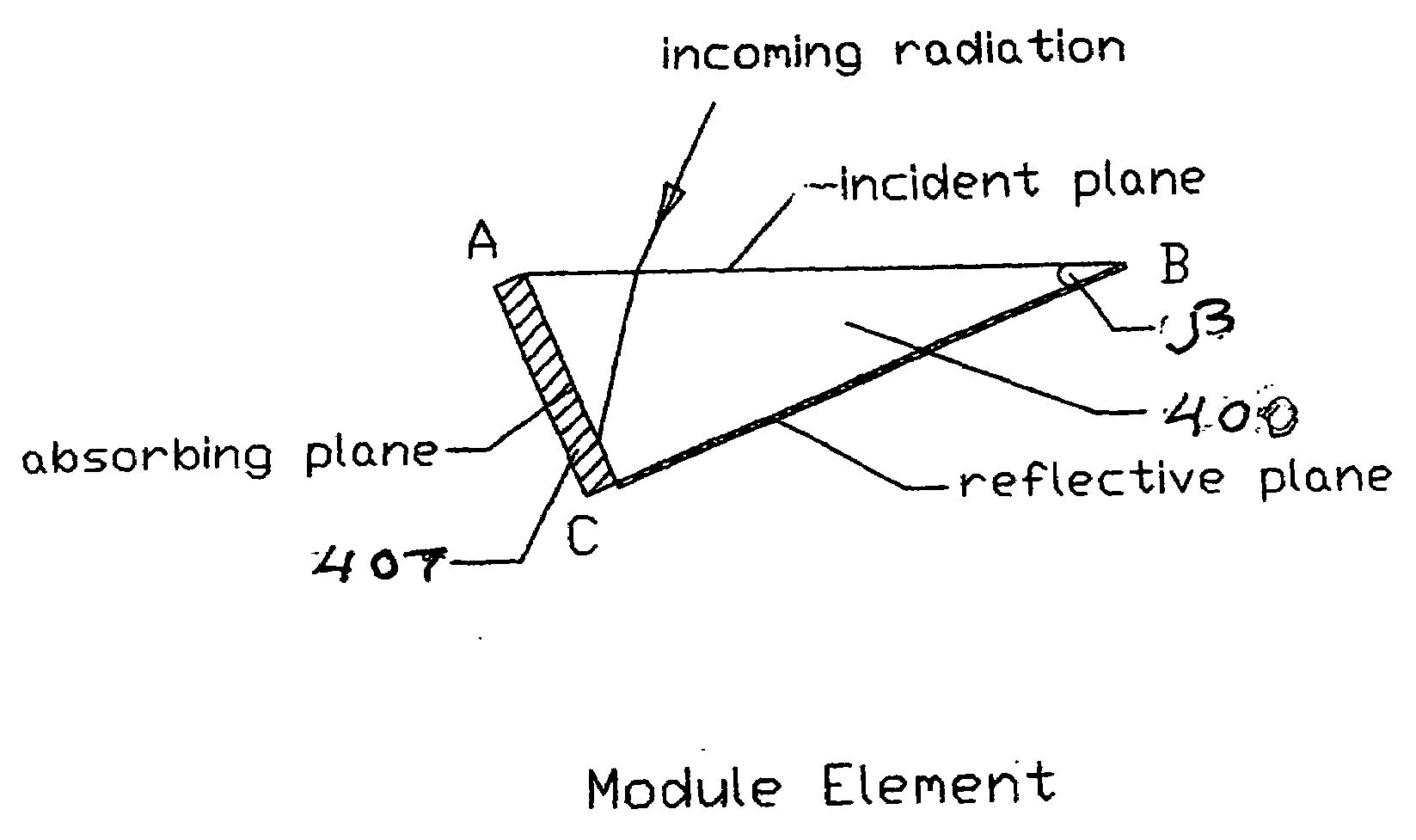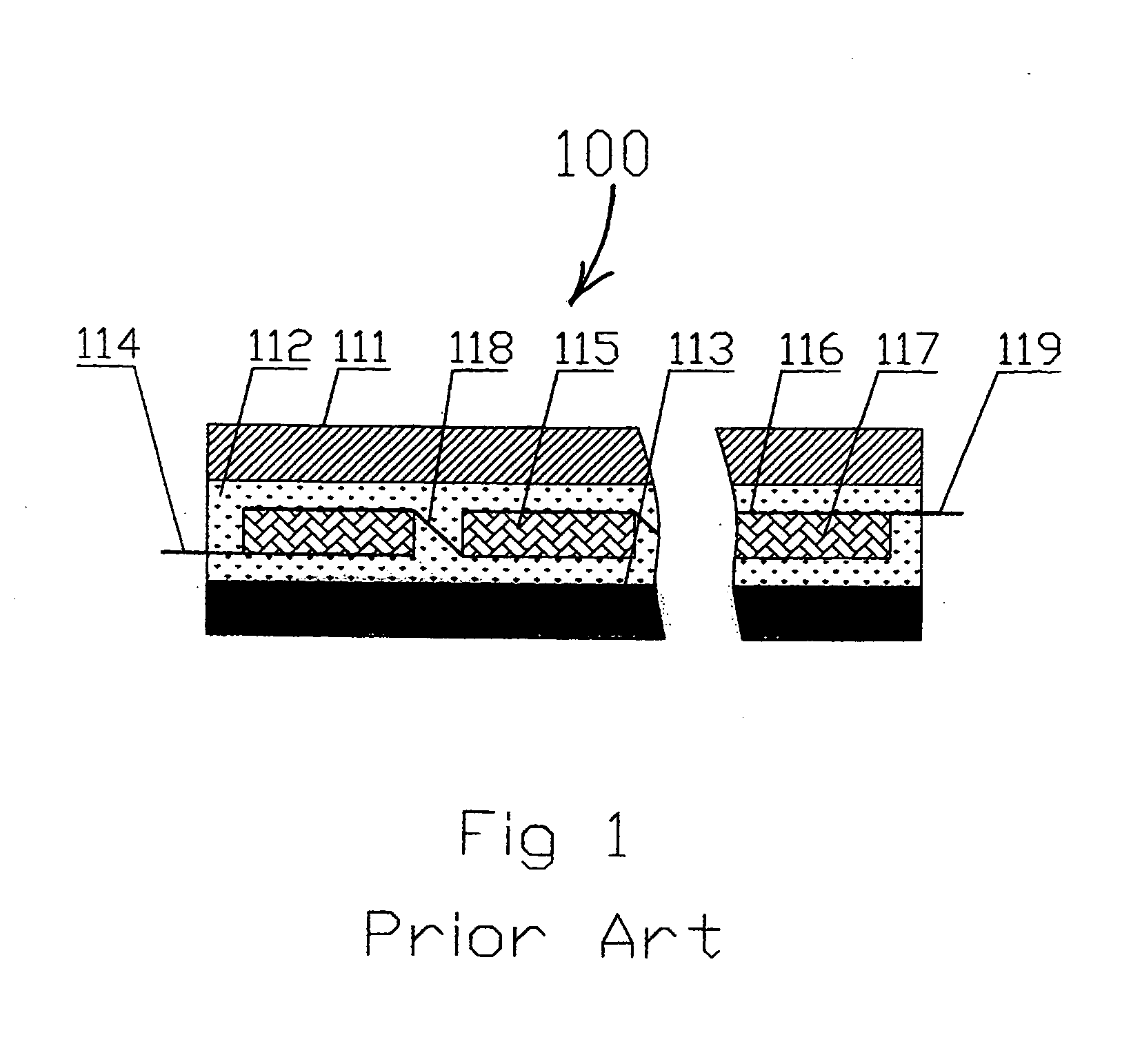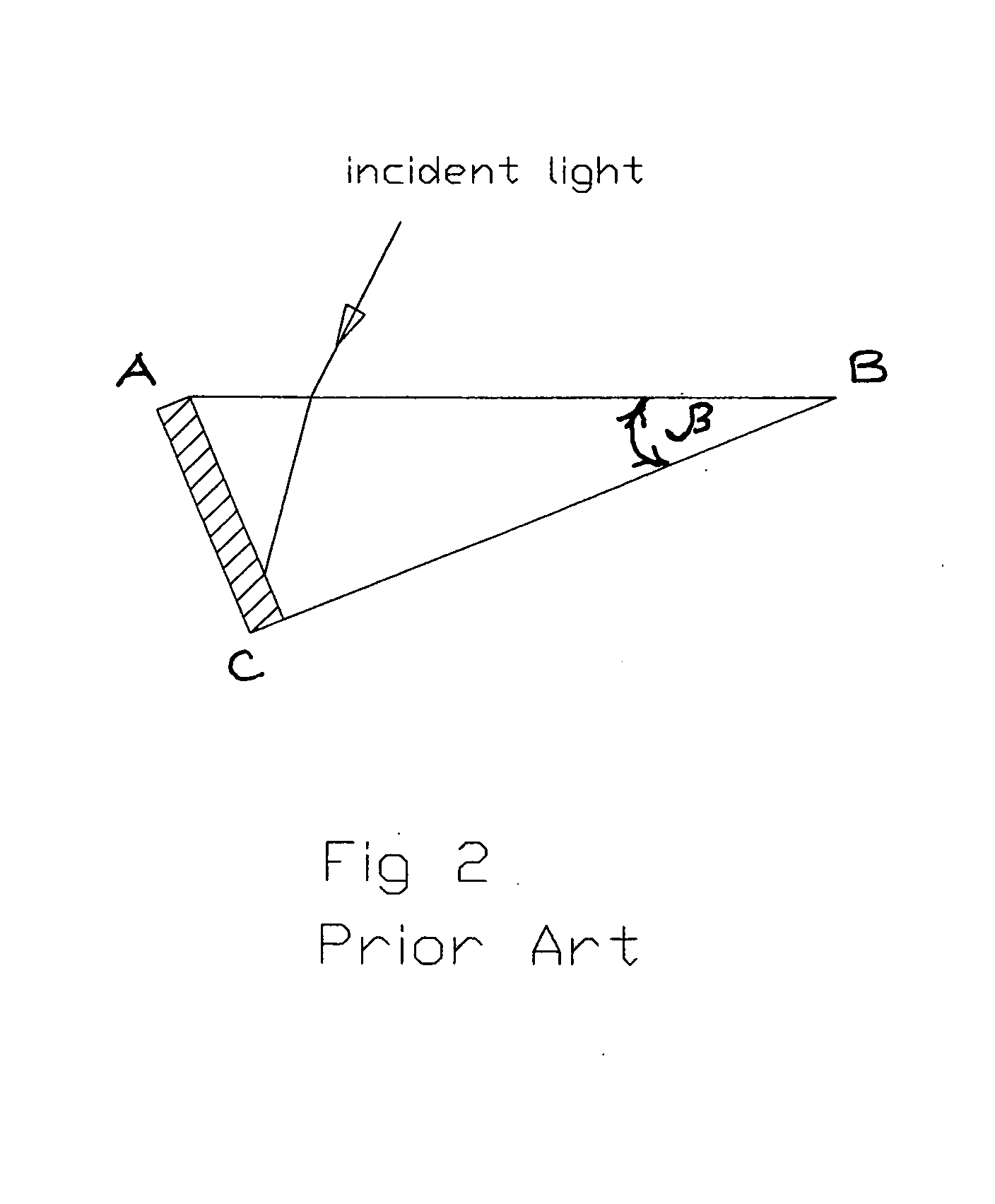Low aspect ratio concentrator photovoltaic module with improved light transmission and reflective properties
- Summary
- Abstract
- Description
- Claims
- Application Information
AI Technical Summary
Benefits of technology
Problems solved by technology
Method used
Image
Examples
Embodiment Construction
[0042]Referring to FIG. 4A, the illustrated prism 400 provides a definitional overview of the nomenclature used to describe the details of a modular element comprising a prism and integrated solar cell as set forth herein. Incoming radiation enters the prism 400 from the incident plane AB. The solar radiation is reflected on the reflective plane BC. The third plane of the prism, the absorbing plane AC, captures the radiation. A photo detector or array of solar cells 407 provided on plane AC converts the solar radiation into electrical energy. The apex angle of the prism is angle β. A photo detector attached to or provided on a single prism with the enhancements discussed below is called a PV “module element.” It is understood that a plurality of PV module elements are electrically coupled to form a PV module.
[0043]FIG. 4B shows that the shadow effect 404 is proportional to the depth or aspect ratio of the prism 400. Thus, it is important to orient the prism 400 so as to minimize sha...
PUM
 Login to View More
Login to View More Abstract
Description
Claims
Application Information
 Login to View More
Login to View More - R&D
- Intellectual Property
- Life Sciences
- Materials
- Tech Scout
- Unparalleled Data Quality
- Higher Quality Content
- 60% Fewer Hallucinations
Browse by: Latest US Patents, China's latest patents, Technical Efficacy Thesaurus, Application Domain, Technology Topic, Popular Technical Reports.
© 2025 PatSnap. All rights reserved.Legal|Privacy policy|Modern Slavery Act Transparency Statement|Sitemap|About US| Contact US: help@patsnap.com



